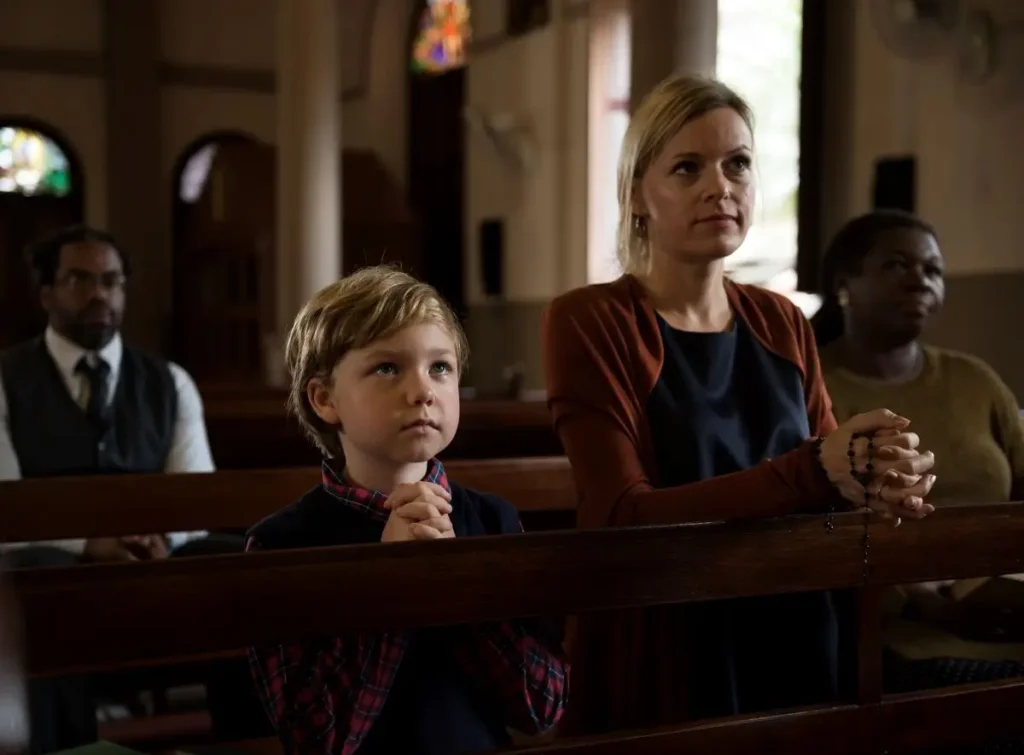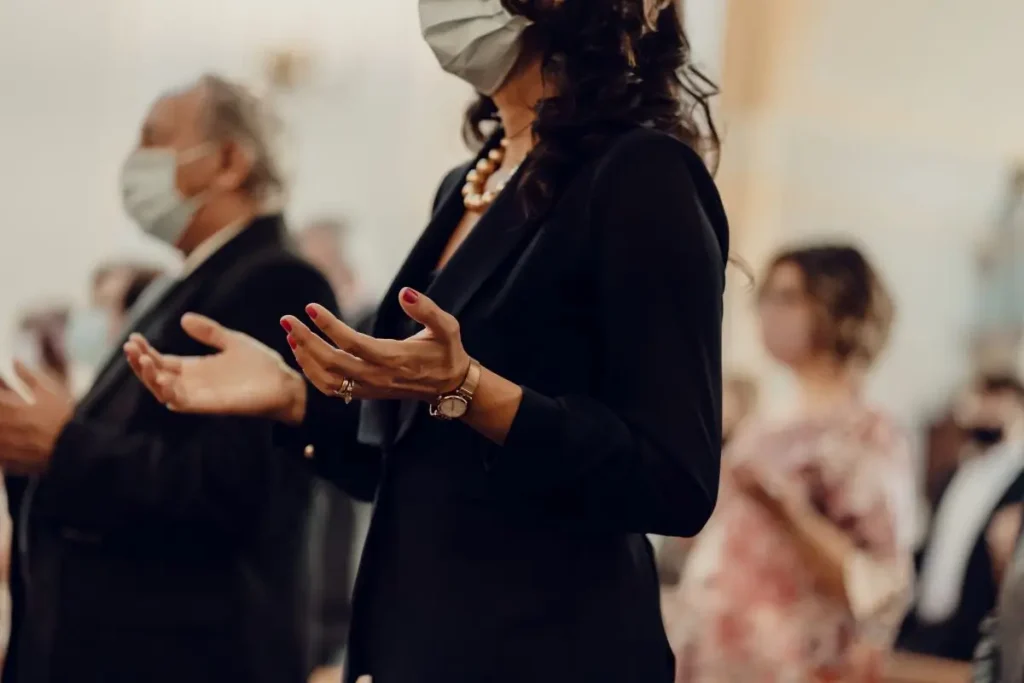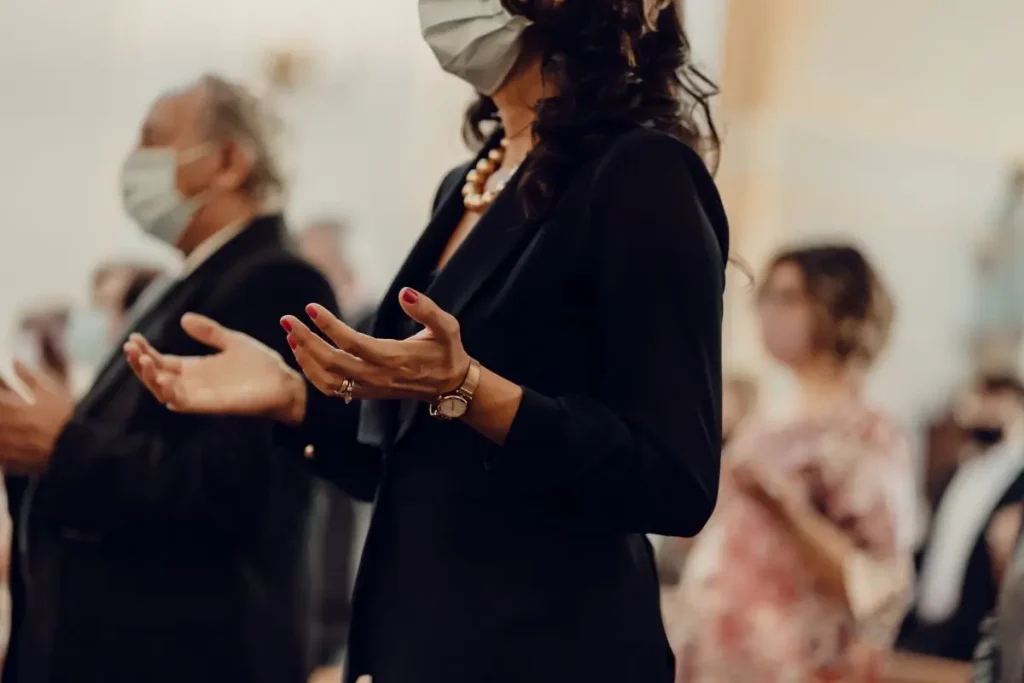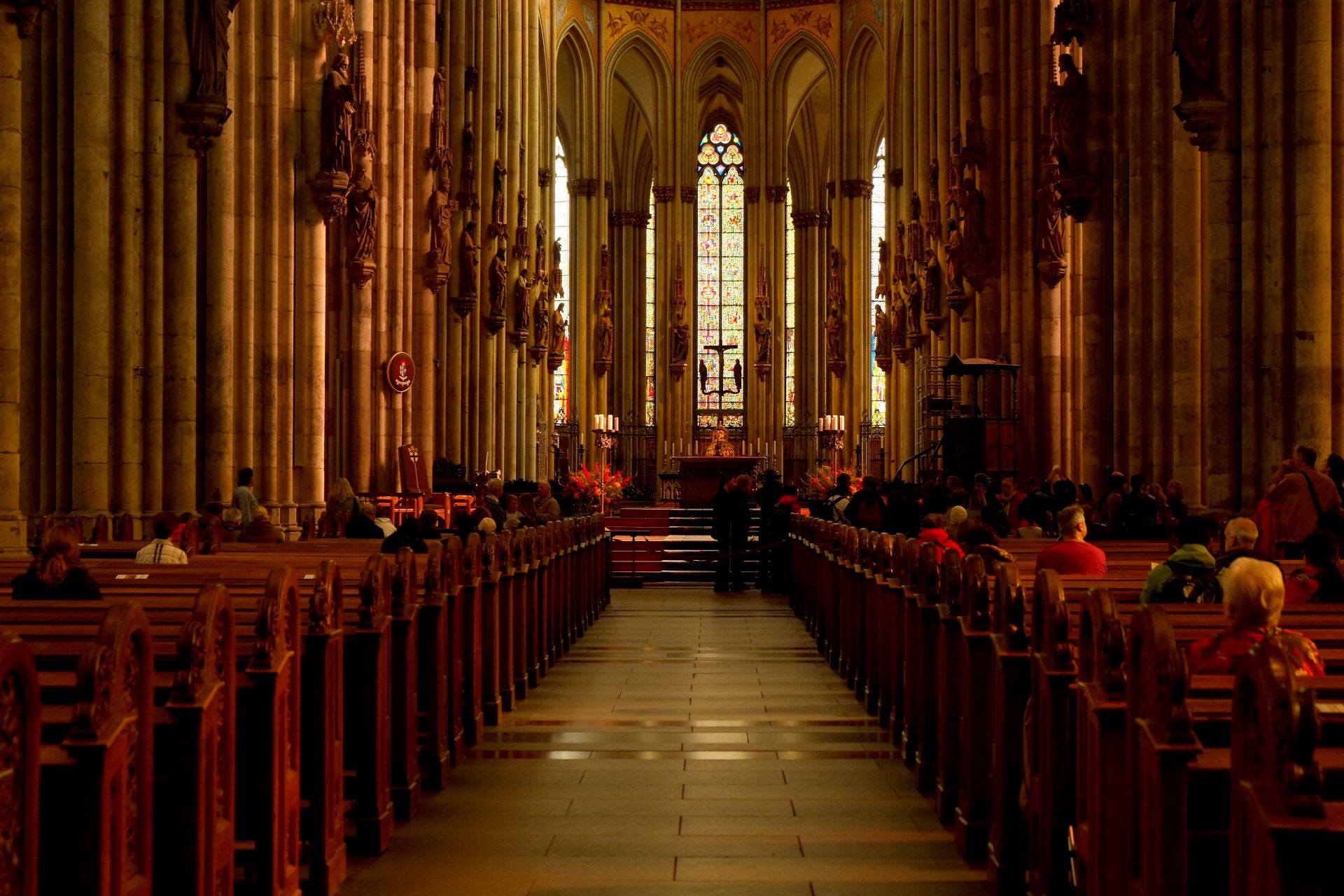The nine-day “Simbang Gabi” or Misa de Gallo (dawn mass) attendance is one of the most prominent Christmas customs in the Philippines. From December 16 to December 24, Filipinos of all backgrounds make an effort to rise early every morning to attend the novena masses, which start as early as 4 a.m. to pray to God for things like stronger family ties, a long and healthy life, and a prosperous career. The custom is to believe that when a person attends all the masses consecutively, their prayer will come true.
However, it becomes questionable whether individuals still have time to observe this tradition when Simbang Gabi happens in the middle of the so-called holiday rush—that is, when everyone is occupied with shopping for gifts for their loved ones, stuck in traffic, and attending Christmas parties everywhere. The majority of Filipino Catholics attend Simbang Gabi despite having hectic schedules, which is encouraging since they have faith that their wishes will be fulfilled after attending all nine masses.
As Crown Asia cherishes the beloved Simbang Gabi custom with the feeling of home, you’ll be transported to the enchanted realm of Filipino tradition and contemporary living. Crown Asia’s magnificent house and lot in Cavite stands out as more than just houses among the ageless appeal of Simbang Gabi’s nine-day morning Masses; they are havens where beloved traditions meet the comforts of modern existence.
Embracing Tradition: The Beautiful Filipino Celebration of Simbang Gabi
In the Philippines, communities get ready for one of the most beloved and colorful traditions, Simbang Gabi, a nine-day stretch of early morning Catholic Masses leading up to Christmas, as December approaches. As Christmas approaches, the air is filled with excitement and anticipation.
“Night Mass,” or Simbang Gabi, starts on December 16 and ends on December 24, the eve of Christmas. Masses are celebrated as early as 4:00 AM, a representation of the faithful’s fervent devotion and expectation. Many see Simbang Gabi as a sincere expression of their religion and sense of community, rather than just a religious duty. It’s the time of year when neighborhoods come to life with vibrant lanterns, called parols, illuminating houses and streets with a cheery, festive glow, lively environment. The lively ambiance is enhanced by the smells of traditional Filipino treats like puto bumbong (purple rice cake) and bibingka (rice cake), which are sold by vendors near churches.

During these pre-dawn Masses, families and friends get together—often dressed to the nines—to pray for blessings, express gratitude, and ask for direction for the upcoming year. It’s a season of introspection, harmony, and spiritual rejuvenation, cementing links within families and communities.
Known as Misa de Gallo or “Rooster’s Mass,” day nine of Simbang Gabi is especially significant. Many people think that if they attend all nine morning Masses, they will get a special blessing or wish, which intensifies their devotion. Simbang Gabi is a cultural event that unites people from all areas of life in a common display of devotion and joy, rather than just being a religious ritual. It is a beloved ritual that is ingrained in the hearts of Filipinos both at home and abroad because it personifies the tenacity, faith, and solidarity that define the Filipino people.
Simbang Gabi, which nourishes the soul and unites communities, continues to stand as a tribute to the rich fabric of Filipino traditions even as the nation embraces modernity.
Exploring the Spanish Roots: The Enduring Legacy of Simbang Gabi in Filipino Culture
One festival, Simbang Gabi, serves as a witness to the long-lasting impact of Spanish colonization on the cultural and religious landscape of the Philippines, among the nation’s vibrant tapestry of customs. Spanish missionaries brought in these beloved early Masses nine days prior to Christmas, and the tradition has its roots in their history.
The Spanish colonial era, which started in the Philippines in the sixteenth century, is when Simbang Gabi first appeared. Motivated by a strong desire to spread Christianity, Catholic missionaries instituted this religious custom to fit in with farmers’ schedules.
This longstanding tradition traces its roots back to the Spanish colonial era when Catholic missionaries introduced the practice of allowing farmers to attend Mass before heading to the fields. Today, it is a cultural and religious cornerstone, fostering unity, faith, and joyful anticipation among Filipinos.
Farmers had to work long, hard days in the fields during the agricultural cycles, especially the planting and harvest seasons. A remedy was provided by Spanish friars who saw how difficult it was for these devoted Catholics and decided to celebrate Mass early in the morning, allowing farmers to attend before starting their daily labor.
Even though the Masses are held in the early morning hours, the phrase “Simbang Gabi” itself comes from the Tagalog terms “Simbang,” which means Mass, and “Gabi,” which means night. The Masses were originally known as “Misa Aguinaldo” or “Gift Masses” in remembrance of the early Christians who attended nine Masses in a row as a novena to venerate the Virgin Mary. This tradition, deeply intertwined with religious fervor and agrarian life, soon became a vital part of Filipino Catholic culture. Over the centuries, it evolved beyond its agricultural context and became a cherished cultural and spiritual event for all Filipinos.
Simbang Gabi is a lively cultural event that brings communities around the country together in addition to being a religious duty. Pre-dawn Masses are marked by celebrations, including the sale of a variety of traditional Filipino treats close to churches and streets decked with vibrant lanterns known as parols.
As a testament to faith, resiliency, and solidarity, Simbang Gabi has endured through the ages and changes in societal dynamics. It draws participants from a variety of origins and religious views, spanning religious barriers in its shared tradition.
The Philippines honors its rich past and the lingering impact of Spanish influence as it celebrates this yearly event. Simbang Gabi is proof of the adaptable nature of Filipino culture.
What changed with the 20th-century version of Simbang Gabi?
The incorporation of new components into the traditional practice of Simbang Gabi was one of the most noticeable advances in its modernization. Modern music, choir performances, and liturgical presentation adjustments gave the Masses a vibrant new dimension that drew in younger attendees and made the events more approachable and accessible.

Additionally, the Simbang Gabi experience has changed significantly as a result of technological improvements. Masses could now be broadcast live thanks to the invention of radio and television, allowing people who couldn’t attend in person to take part in the festivities from the comfort of their own homes. Social media and the internet have made it easier to acquire information in recent years, and, particularly in the epidemic era, live streaming and virtual involvement have grown in popularity.
Another change that Simbang Gabi experienced was in its gastronomic offerings. Traditional Filipino foods like puto bumbong and bibingka continued to be mainstays, but new twists and modifications appeared to suit a range of palates. In order to accommodate shifting dietary preferences and broadening gastronomic horizons, vendors and communities provided a wider range of food options.
Instead of lessening Simbang Gabi’s spiritual essence, modernization has made it more approachable and relevant in a culture that is evolving quickly. By adopting technology, modifying traditional components, and accommodating changing tastes, this custom has become more inclusive, enabling it to cross geographical barriers and appeal to a wider range of people.
As Simbang Gabi continues to evolve, its core values of faith, unity, and celebration remain steadfast. The modernized approach seeks to bridge tradition with innovation, ensuring that this beloved Filipino tradition retains its significance while embracing the spirit of the times.
Reviving Hope and Faith: Filipinos Embrace Simbang Gabi Amidst Pandemic Recovery
For Filipinos all around the country, the beloved custom of Simbang Gabi stands as a symbol of optimism, resiliency, and spiritual renewal as the country continues to negotiate the difficult post-pandemic terrain. This year, the customary nine-day novena of dawn Masses preceding Christmas is especially meaningful since it is evidence of the nation’s resiliency and the unwavering power of religion even as it recovers from the effects of the pandemic.

The epidemic upset the cycles of life, casting doubt on long-standing beliefs and practices, such as Simbang Gabi observance. But when limitations relaxed and immunization campaigns picked up speed, Filipinos enthusiastically welcomed the chance to bring this cherished custom back, if with modified safety precautions.
Communities all around the archipelago expressed thanks and a new sense of purpose upon Simbang Gabi’s homecoming. Before the sun rose, churches decorated for the holidays with vibrant lanterns and festive décor welcomed the faithful to participate in these unique masses.
The attitude of cooperation and togetherness persisted in spite of the pandemic’s aftereffects. After months of seclusion, families and friends came to the pre-dawn Masses, wearing masks and keeping a physical distance from one another. Through attending, they expressed their religion and reconnected with the community.
The Simbang Gabi celebrations this year are a testament to adaptability and resiliency. In order to accommodate people who are unable to attend in person owing to distance or health issues, many parishes and dioceses have chosen to use hybrid alternatives, such as streaming Masses. Technological advancements bridged the gap, allowing the faithful to participate virtually while still fostering a sense of belonging and spiritual communion.
Check Out Our House and Lot Property in Bacoor!
The epidemic presented difficulties, but it also highlighted Filipinos’ steadfast faith and natural capacity for adaptation and perseverance in the face of hardship. The deeply rooted custom of Simbang Gabi provided inspiration and consolation, serving as a constant reminder of the value of hope, community, and faith during uncertain times.
Simbang Gabi is a moving reminder of the Filipino people’s tenacity as the country moves forward with its healing process. It represents the nation’s path toward reconciliation, healing, and a more promising future by illuminating the persistent hope that endures even in the face of hardship.
In the twilight hours before Christmas, the essence of Simbang Gabi echoes louder than ever—a celebration of faith, a reaffirmation of unity, and a testament to the unyielding spirit of the Filipino people as they forge ahead towards a new dawn.
Simbang Gabi 2023

As Simbang Gabi, the beloved Filipino custom of nine Masses held before dawn, draws near in 2023, excitement builds. In prayerful anticipation of Christmas, families, and communities will come together to create a beautiful tapestry of religion, community, and celebration. This year’s Simbang Gabi, which blends tradition and contemporary to create a celebration that captures the eternal spirit of the Filipino people, offers a renewed sense of hope, resilience, and solidarity in spite of the difficulties of the past.
As Filipino Catholics began the nine-day commemoration of Simbang Gabi, or morning masses, on December 16, leading up to Christmas Day, Manila Archbishop Jose Cardinal Advincula proclaimed, “Like the Christmas lights and the parol you see everywhere, shine your own light on others facing darkness.”
Advincula said in his sermon in Filipino that Filipino Christians should be encouraged to shine their light on others by the Christmas lights and parol, the country’s version of the traditional Star of Bethlehem that is seen in most houses and businesses.
He said that those facing difficulties like unemployment, illness, and poverty should feel the light, which stands for courage and hope.
He continued, pointing out that although light emerges in the midst of extreme darkness, it should also inspire a life devoid of sin and one that is kind and just.
He added, “We must not add to the darkness if we cannot share light.”
Advincula thought about John the Baptist, the cousin of Jesus, who was heralding the coming of the Son of God, and how he was likened to “a lamp that burned and gave light” in John 5:33–36.
Despite Advincula’s earlier request that devotees use face masks to prevent the spread of COVID-19 and other respiratory ailments, several of the attendees in the church were not wearing them.


